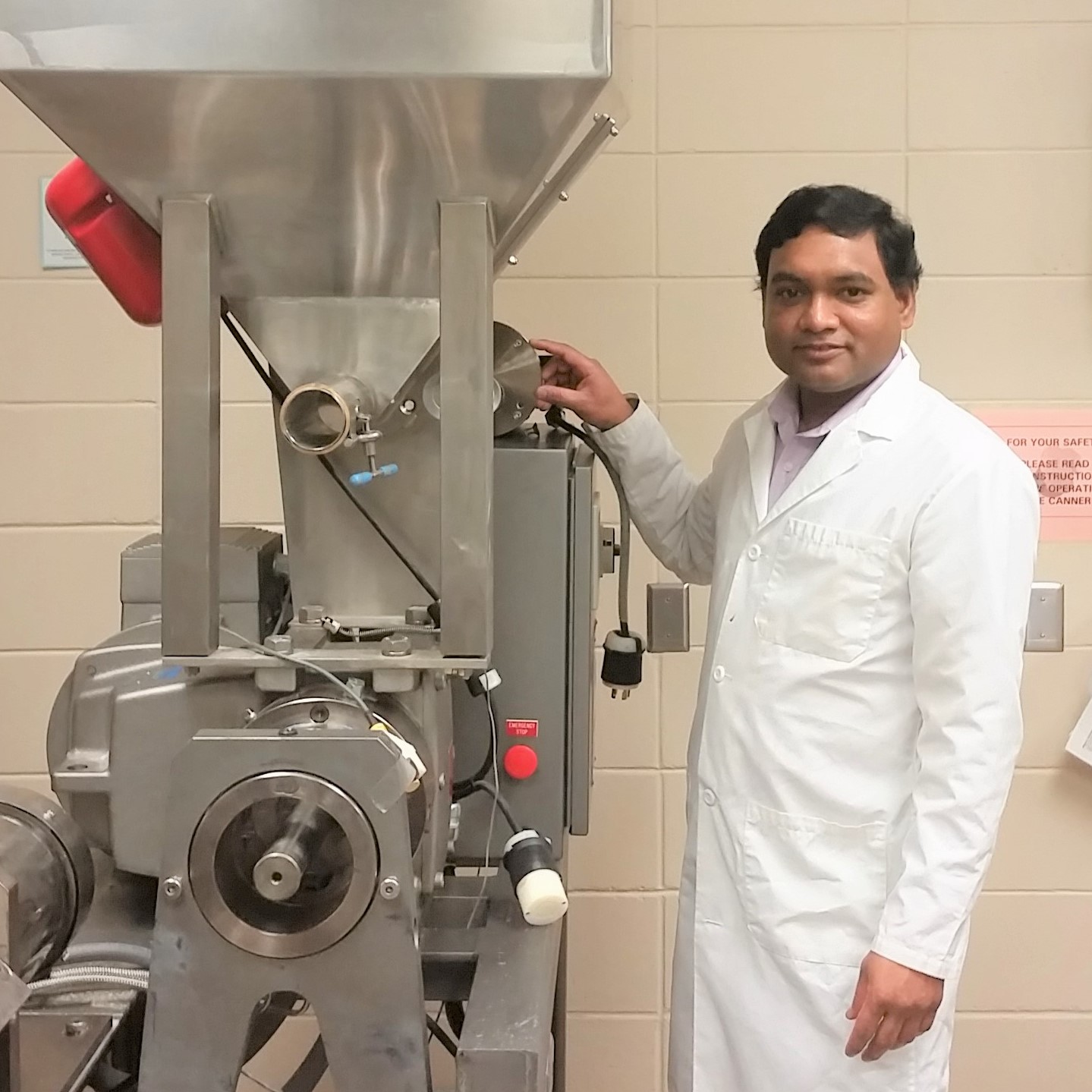UW-Stout
Associate Professor
Kinesiology, Health, Food & Nutritional Sciences
 Dr. Mitra is an Associate Professor of Food Science and Technology Program at the University of Wisconsin-Stout. He received his bachelor’s degree in Agricultural Engineering in 2002 (Bangladesh), master’s degree in Food Technology in 2004 (Bangladesh) and PhD in Food Science and Technology in 2007 (South Korea). He taught and developed many on-campus/online undergraduate and graduate courses related to basic food science, unit operations, food engineering, food product development, food preservation and safety engineering and food packaging etc. Prior to join to UW-Stout in 2017 as Assistant Professor, he conducted over 8 years of postdoctoral research at McGill University, University of Saskatchewan, Agriculture and Agri-Food Canada and Cornell University. His research interests are in food engineering/processing/bioprocessing, extrusion in food processing, drying of agricultural materials, thermal/non-thermal food processing, food and non-food product development, extraction and isolation of bioactive compounds, 3D food printing technology, sustainable food packaging and AI in food processing. He received the Outstanding Research Mentor Award 2025, Outstanding Graduate Faculty Award 2024 and Emerging Outstanding Researcher Award 2023 from UW-Stout. He is serving as editor, editorial board member and reviewer for several journals.
Dr. Mitra is an Associate Professor of Food Science and Technology Program at the University of Wisconsin-Stout. He received his bachelor’s degree in Agricultural Engineering in 2002 (Bangladesh), master’s degree in Food Technology in 2004 (Bangladesh) and PhD in Food Science and Technology in 2007 (South Korea). He taught and developed many on-campus/online undergraduate and graduate courses related to basic food science, unit operations, food engineering, food product development, food preservation and safety engineering and food packaging etc. Prior to join to UW-Stout in 2017 as Assistant Professor, he conducted over 8 years of postdoctoral research at McGill University, University of Saskatchewan, Agriculture and Agri-Food Canada and Cornell University. His research interests are in food engineering/processing/bioprocessing, extrusion in food processing, drying of agricultural materials, thermal/non-thermal food processing, food and non-food product development, extraction and isolation of bioactive compounds, 3D food printing technology, sustainable food packaging and AI in food processing. He received the Outstanding Research Mentor Award 2025, Outstanding Graduate Faculty Award 2024 and Emerging Outstanding Researcher Award 2023 from UW-Stout. He is serving as editor, editorial board member and reviewer for several journals.
TEACHING AND LEARNING PHILOSOPHY
Teaching is Dr. Mitra’s cherished profession because he enjoys teaching and learning together, and this profession can give him those opportunities. He started teaching as a private tutor when he was a high school student, which motivated him to be a teacher. As assistant/associate professor at UW-Stout, he expanded and achieved substantial experience in teaching graduate and undergraduate students by teaching 17 different courses related to basic food science to advanced food engineering/processing. His teaching philosophy is dynamic, and it is a work in progress, developing and up to date by gaining experience and experimenting with different useful teaching methods and techniques. His teaching philosophy is based on respect for expertise, diversity of learning styles and educational goals of the students. He usually does enough groundwork before going to class to deliver the subject matter very clearly in a simple way so that students can understand his lecture easily. The outside of classroom activities such as formal and informal problem sessions, peer study groups, one-on-one tutoring sessions, student-teacher conferences and hands-on projects bring opportunities for students to be cooperative and social and help the students to enrich their communication and leadership skills.
His teaching philosophy reflects his interests in collaboration and creating student-centered teaching that encourages learning by both students and teachers because the students learn best when students are enthusiastically engaged in the learning process and receive feedback on their strengths and areas they need to develop. He always tries to encourage them in active dialogue, spontaneous questioning and sharing their thoughts. A teacher should try to extract students’ strengths and help them to think critically and to see and respect the different perspectives their classmates bring and to step out of their own comfort areas gradually, challenge them to learn the materials through different views and experiences. Teaching involves a reciprocal relationship between teachers and students. A strong cordial relationship between the teacher and students is essential for successful teaching and learning.
In conclusion, the improving teaching effectiveness is a continuous process and can be developed through gaining more and more experience and teachers should keep their mind open about the different teaching approaches, methods and techniques and collaboration of knowledge and skills with other relevant educators for the sake of creating the best student learning environment.
